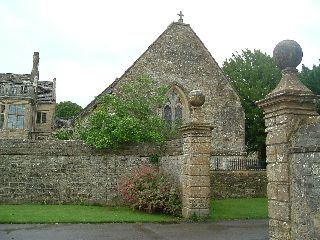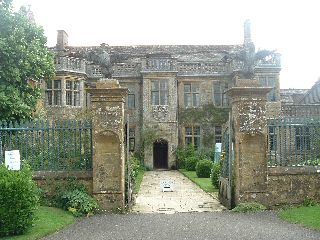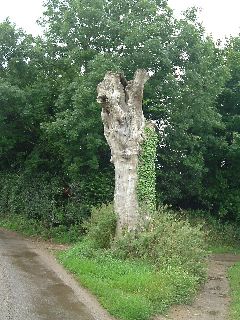|
Photographs of the parish, we hope you enjoy them.
All photographs © Sally Beadle, 2009-2015 |
|
|
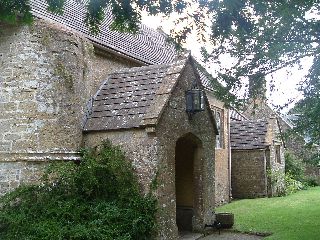 |
The Church of All Saints, dating
from the 12th century and also built of
Ham stone, adjoins Mapperton House. Described in
1291 as a chapel to Netherbury, it was rebuilt by
Richard Brodrepp in 1704 and extensively repaired in
1846. The doorway is medieval and the font is 12th
century. The church has windows of 16th
and 17th century painted and stained
glass and 17th century choir stalls,
communion rail and pulpit. There are a number of
monumental inscriptions in the church. Although
baptisms and marriages took place in the church, the
parish paid threepence a year for the privilege of
burials at Netherbury, due to the rocky ground at
Mapperton. There are only 5 burial entries for
Mapperton since 1793. In 1971 the parish was joined
to Melplash and in 1977 All Saints Church was sold
to Mr Montagu and became a private chapel to the
estate. It is possible to visit the church when the
gardens are open.
|
|
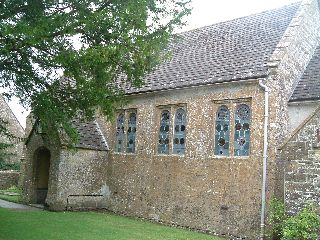 |
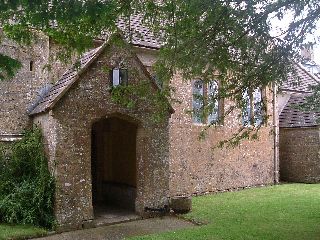 |
|
All Saint's Church, Mapperton |
|
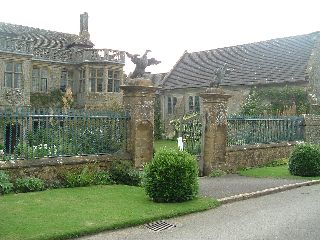 |
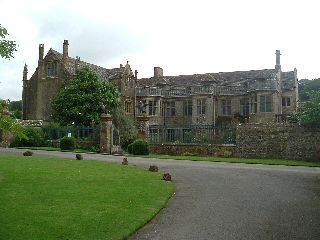 |
|
Mapperton House (with All Saint's Church adjoining)
|
|
|
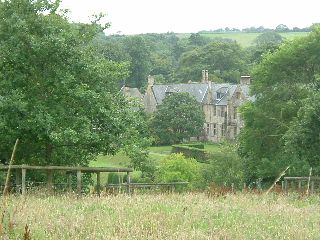 |
|
Mapperton House |
|
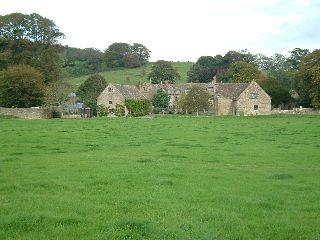 |
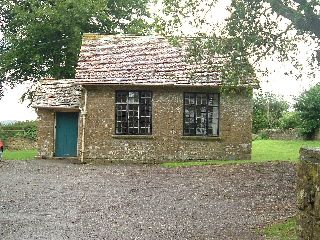 |
|
Mapperton House |
Old School |
|
|
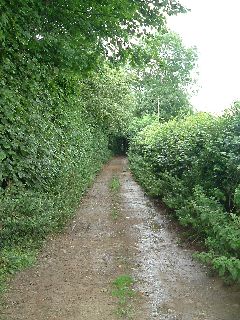 |
The Posy Tree
(above left) at Mapperton marks where Dead
Man’s Lane (above right) branches off from
the road to the village. It was down this lane
and across the hill to
Netherbury that bodies
were taken for burial. When the plague struck
Mapperton, the villagers of Netherbury, armed
with staves, met the cortege of the first plague
victims and refused to allow them to progress to
Netherbury for fear of infection. A pit was dug
on South Warren Hill and the plague victims were
buried there. Human bones sometimes surface in
that area. There is some confusion as to the
facts of this story. One theory is that the
plague struck Mapperton in 1348, soon after it
first arrived in England by ship at Melcombe,
near Weymouth, and that the Posy Tree was an oak
tree. Another states that the bubonic plague
struck Mapperton in 1582, killing 80 villagers,
whilst a third argues that the plague of 1665
was the one which wiped out the village of
Mapperton and that the tree was a sycamore. As
there is nothing in the parish records to
indicate the death of such a large number of
people in 1665, this, together with various
other strong arguments, makes the 1582 date more
likely. The Posy Tree - so named as mourners
passing it carried posies of sweet smelling
herbs and plants to cover up the smell of the
corpses and protect against infection – although
old and past its prime, is unlikely to be the
original tree.
22 Nov 2015: Visitors to Mapperton
will look in vain for the famous Posy Tree as seen
in the above photo. The tree was very old and had
become unsafe and in August 2011 it was removed.
The opening to Dead Man's Lane looked very empty
until a new, young sycamore tree was planted during
2015 to replace the old one. It will be many years
before the young tree will be able to fill either
the physical or historic space left by its
predecessors, but it is good to know that the
tradition is being continued.
|
The cottages at
Mythe (see
below), once the homes of farm
labourers and their families - the descendants of whom are spread all
over the world - remain now only as ruins, their stone having been
removed for use elsewhere on the estate. The 1841 census shows 8
families living there, in probably only 4 or 5 small dwellings. By the
1920s the cottages were in ruins, except for a pair of semi-detached
cottages which were occupied until the early 1950s.
|
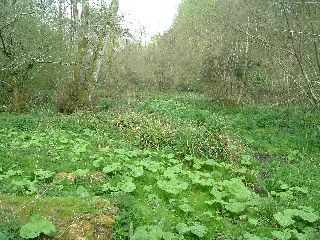
|
|
|
Mythe Gardens and Orchard |
|
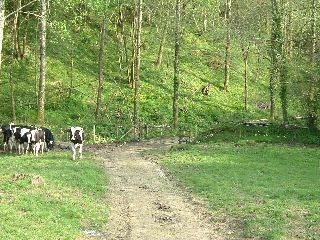 |
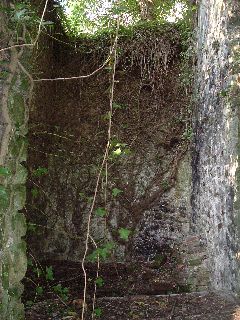
|
|
Track to Mythe |
Washing Room, Mythe |
|
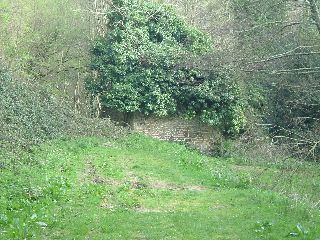 |
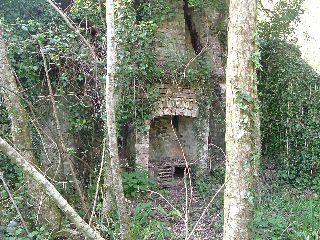
|
|
Mythe Cottage 1 |
Mythe Cottage 1 |
|
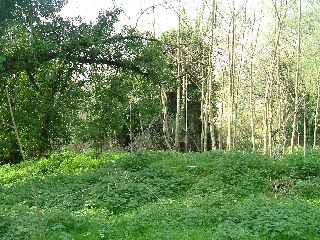 |
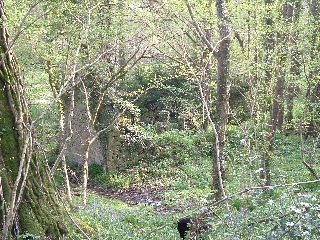
|
|
Mythe Cottage 1 |
Mythe Cottage 2 |
|
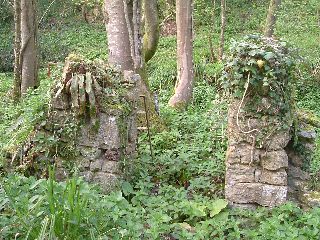 |
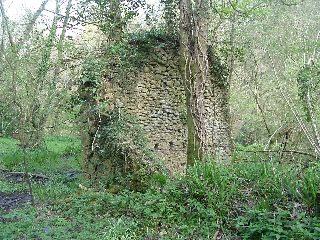
|
|
Mythe Cottage 2 |
Mythe Cottage 2 |
|
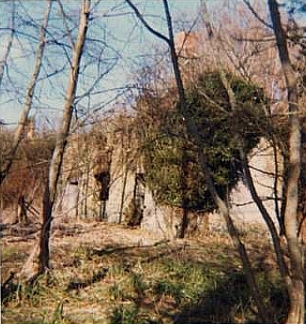 |
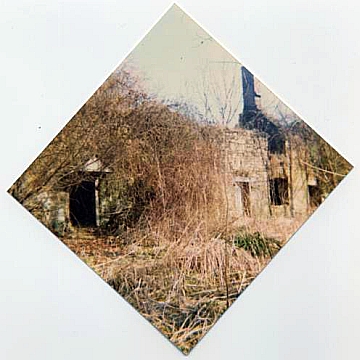 |
These
photos taken in 1979 correspond most
closely to the third photo of Cottage
One above, although the diamond shaped
one is not taken from the same angle.
It can clearly be seen how much more
there was of the cottage 30+ years ago!
The photos give a much better idea of
what the cottage(s) would have looked
like when still inhabited.
|
|
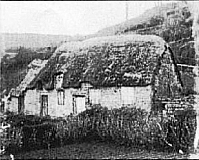 |
This photo is believed to be of one of the
Mythe Cottages. I think it is of what I have
called Cottage 2 in the photos of the ruins
above. I have been down to the cottages with
the photo and the background and gable end match
up, although there are more trees there now.
According to someone who lived in Cottage 1 in
the 1920s, Cottage 2 was already rubble then
|
